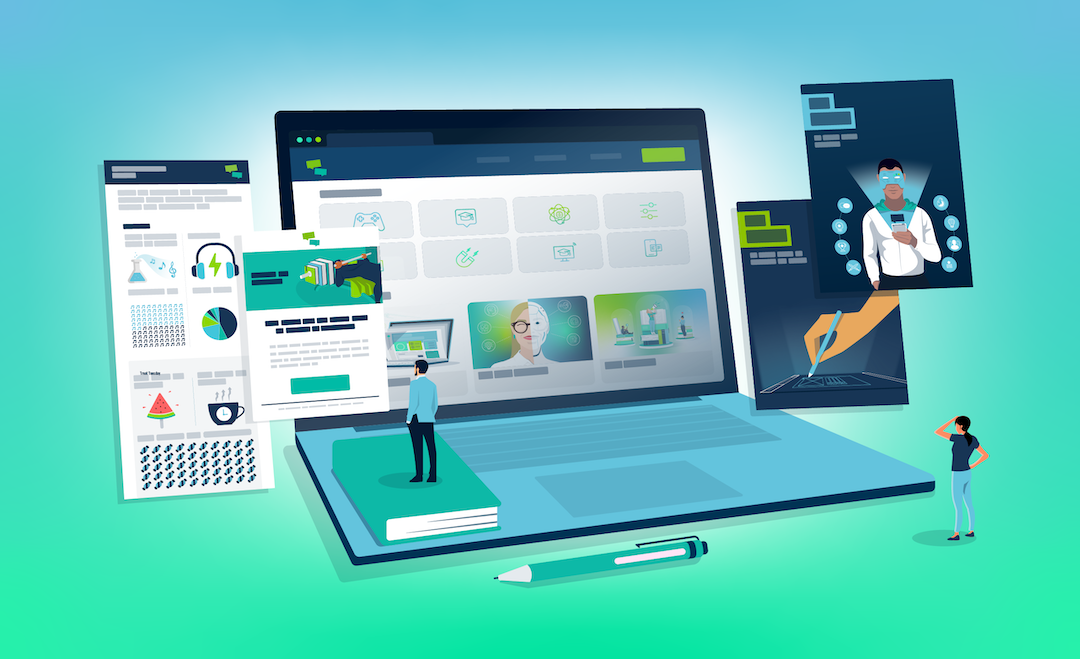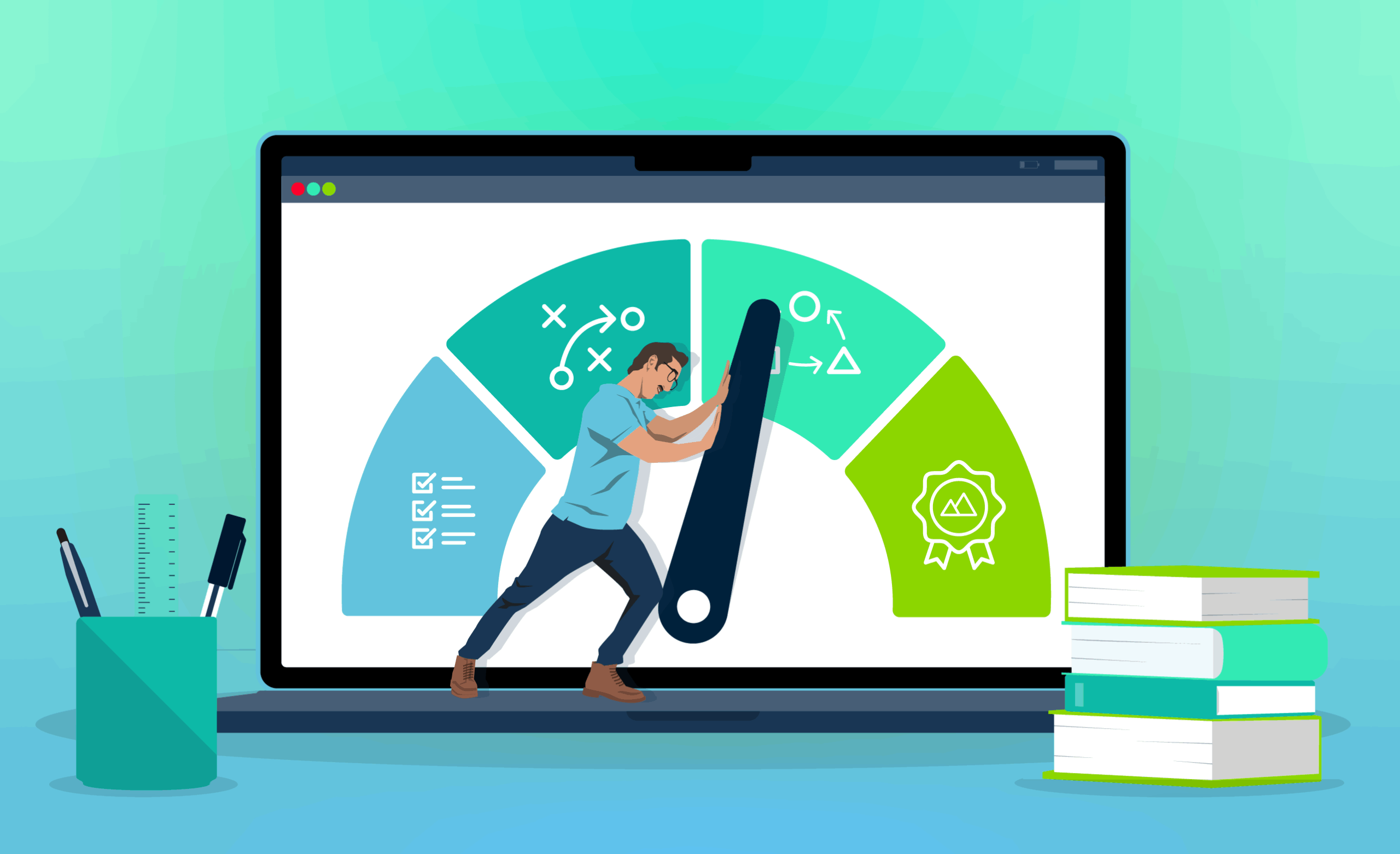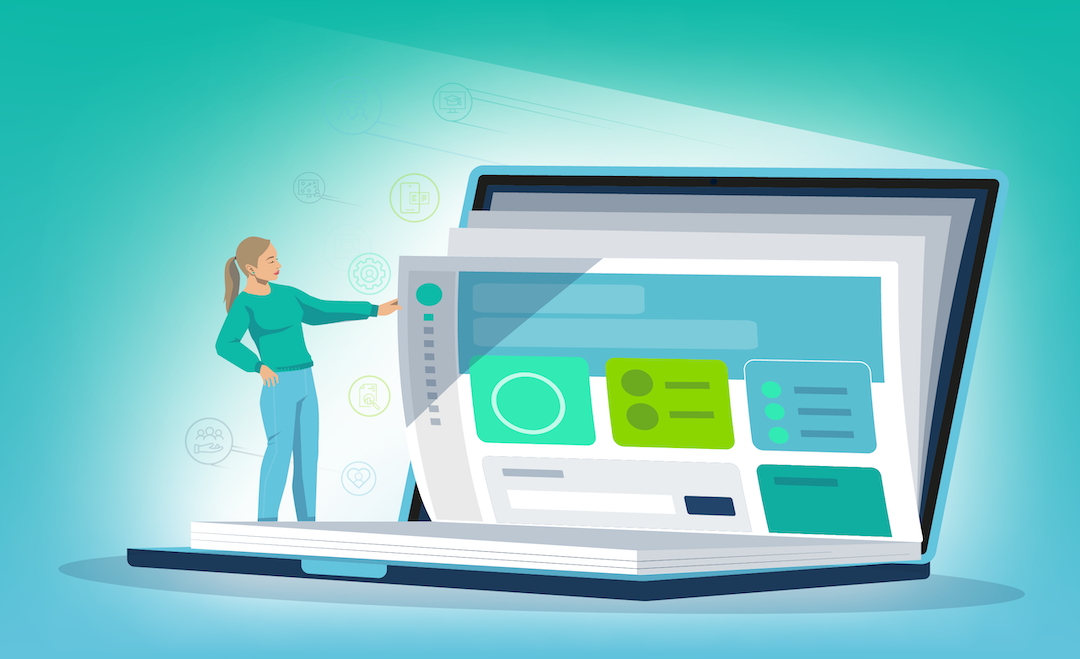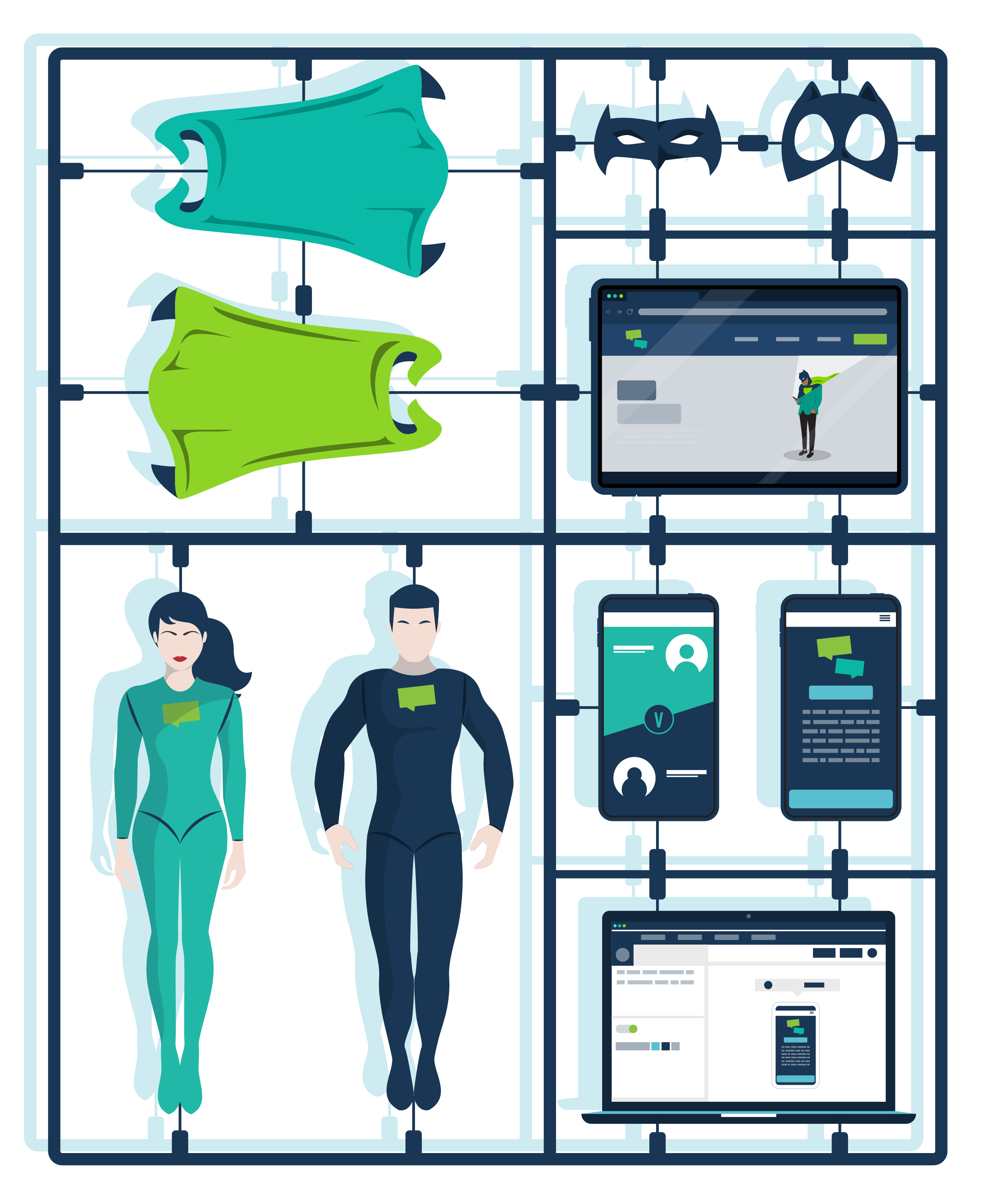
Ineffective instructional design is simply a waste of resources. The solution is to get to know your target audience properly. That’s where learner personas come in!
Learner personas help you to create human-centred and empathetic learning experiences. After all, you’ll understand the needs, preferences, motivators and training challenges of your real learner audience.
By creating effective learner personas, you can understand what works for your learners and what doesn’t. As a result, you can supercharge your training programme and ensure it yields real results.
But creating effective personas takes time and careful planning. With this in mind, this article runs you through the whole process and will help you to achieve success!
What Is A Learner Persona?
The marketing industry uses buyer personas to gain an understanding of their audiences and make better decisions. Likewise, UX or UI designers craft user personas to ensure their designs resonate with their target audience.
In the wonderful world of learning and development, these characters are called learner personas. In a nutshell, a learner persona is a fictional representation of your real learners.
In fact, learner personas are built based on real data you collect from your existing or potential learner audience. As a result, you can create representative personas that help you to understand what makes your learners tick.
By understanding your learners’ skills, training needs and preferences, you can design engaging and relevant learning experiences. Ultimately, learner personas are the key to optimising your training programmes with human-centric design in mind.
Some L&D teams use more general learner personas to understand their audiences. However, we recommend a detailed approach. Your personas should include, for example, age, work experience, character traits, skills, prevailing skills gaps and training goals.
This data should come directly from your real learners. In fact, a learner persona can be seen as an archetype that represents their common characteristics, demographics and attitudes.
Before we explore the design process, let’s have a look at the benefits of introducing learner personas.
The Benefits of Learner Personas
1. Helps You to Understand Your Learners
Let’s start with the most obvious benefit! Creating learner personas is an excellent way to understand your learners’ goals, motivations, challenges and preferences. In fact, personas provide a deeper level of insight into your learners.
This, in turn, will help you to design learning experiences that are more relevant and effective. After all, you’ll have first-hand data on what makes your target audience engage with their training.
2. Promotes Learner-Centred Design
Learner personas help you to draw the focus away from the wants and needs of your managers, C-suite decision-makers and stakeholders and shift it onto the learner instead.
In other words, learner personas help you to transfer your design process away from what seems to best suit your organisation to a more learner-centred approach. The focus is on what will best fit your specific audience.
Learner-centred learning can yield far better outcomes both for your learners and your organisation. By focusing on the needs and preferences of your learners, you can create a programme that is effective and engaging.
And remember: you can’t create impact without engagement.
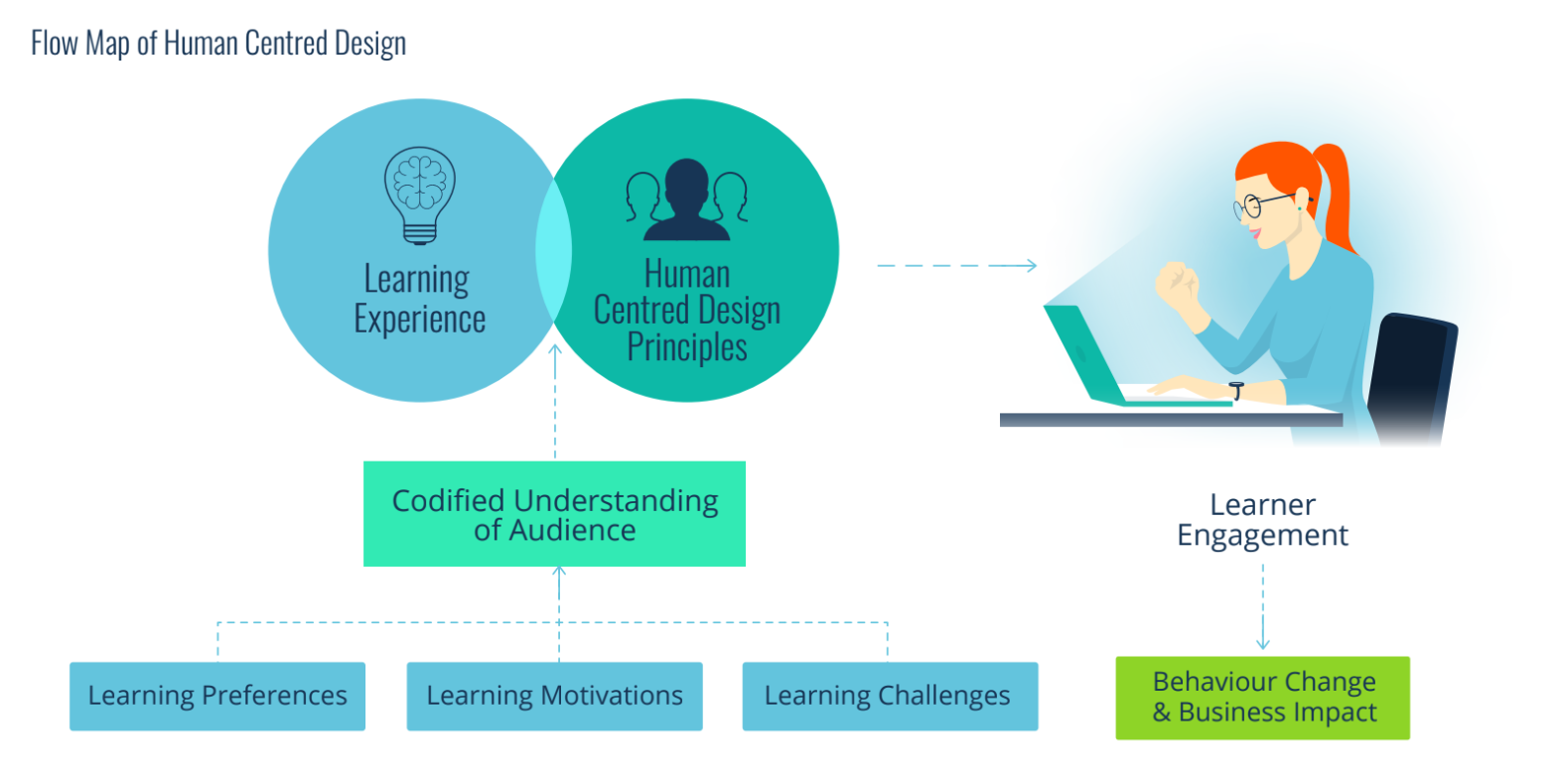
3. Enables Personalised Learning
Learner personas can also guide the development of personalised learning pathways. These pathways are tailored to each learner’s needs, goals and interests. In addition, personas help you to ensure that you create learner-focused content.
Ultimately, personalised training can lead to better learning outcomes and higher engagement. After all, personalised learning is tailored, relevant and relatable for each and every individual in your learner audience.
4. Improves Consistency
Learner personas can serve as a common language for your instructional designers, subject matter experts (SMEs) and other stakeholders. As such, they help you to establish consistency throughout your processes.
In fact, learner personas can improve communication, alignment and collaboration. After all, your personas help to focus the learning design process and limit any misunderstandings as your stakeholders have a clear understanding of your audience.
You can ensure each person carries out their tasks with specific learner personas in mind. You can even think of your personas as source documents of sorts.
5. Aids in Decision-Making
Learner personas help you to identify the most important learning objectives, content and activities to attract your target audience. As such, they also aid your decision-making when it comes to your training programme.
With learner personas, you can reduce the need for costly revisions and modifications. After all, once you know your learners’ inside out, you are in a better place to create relevant content and training that resonates.
6. Facilitates Effective Evaluation
Once you have created your personas, you should use them to identify your learning objectives and key performance indicators (KPIs).
By setting relevant KPIs, you will be in a good place to evaluate the effectiveness of your learning experiences on your target audience. Similarly, making continuous improvements over time becomes easier with a more targeted approach.
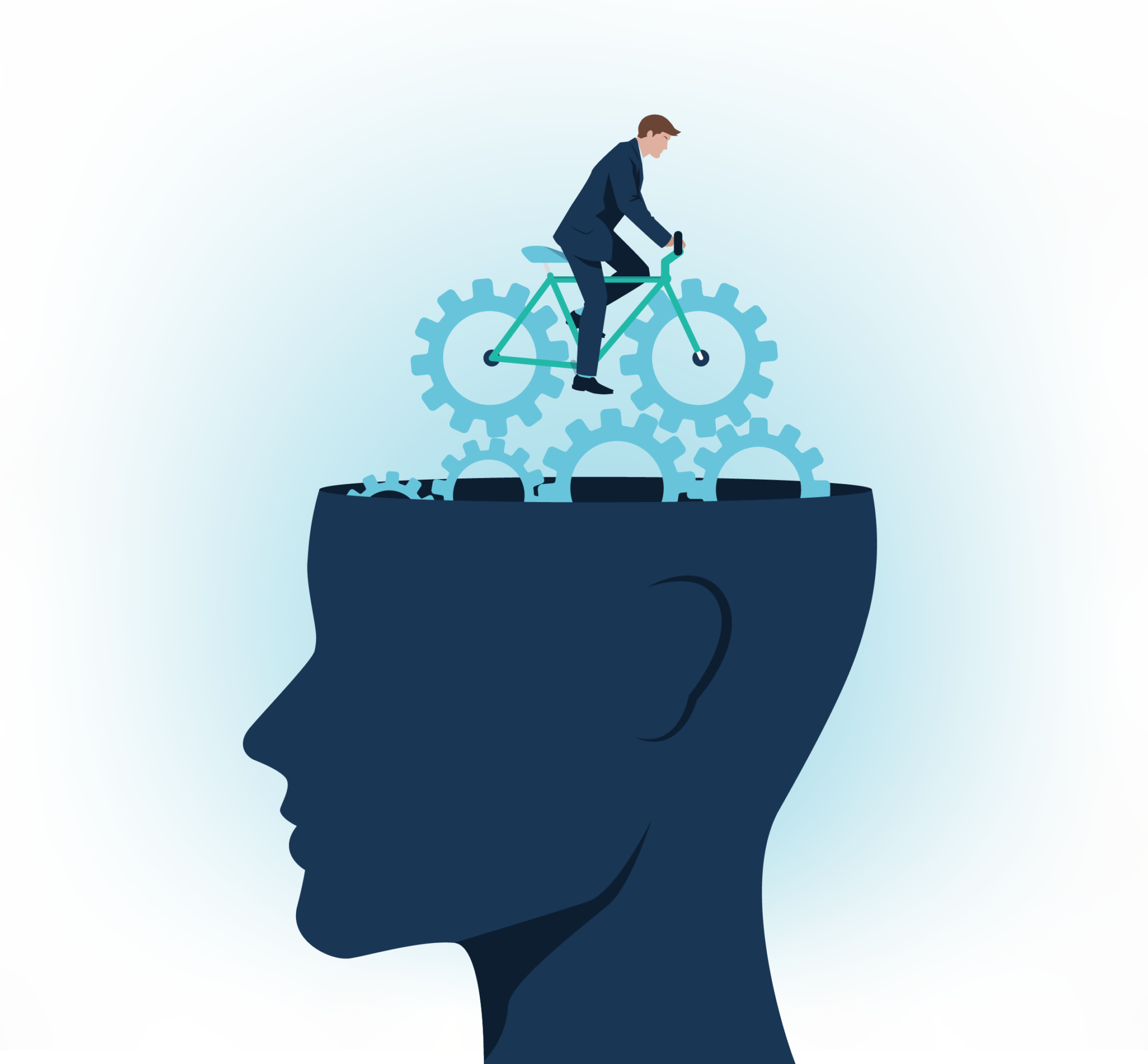
7. Reduces Cognitive Load
Learning is a complex process. In addition, today’s modern learning environments are full of innovative features.
While these features arguably make the learning experience more fun and engaging, it can sometimes feel overwhelming. There may be cases where these elements become distracting rather than helpful.
Learner personas narrow your focus to the specific needs of your target audience. This helps you to prevent cognitive overload and makes it easier for your learners to engage with their training content.
8. Aligns Training with Your Business Goals
Crafting personas can also help you to align your learning objectives with your wider organisational goals.
By identifying the skills your employees need to succeed in their roles, you can design learning experiences that support your organisation’s strategic objectives.
9. Supports Accessibility
Learner personas dive deep into your learners’ motivations and training challenges. This, of course, means that you can identify any accessibility needs and preferences early on.
As a result, you can design learning experiences and utilise digital learning platforms that are inclusive and accessible to your wider learner audience. This alone can improve their learning outcomes, as there won’t be any impediments to their success.
10. Fosters Innovation
Learner personas can inspire new ideas and approaches. After all, you are challenging traditional assumptions and expanding your knowledge and perspectives.
Your learners have diverse skills, needs and preferences. By understanding your learners better, you can explore new ways to deliver training content and create engaging learning experiences.
For example, you may identify new technologies or methods that you have not used before.
How to Create Learner Personas
Let’s explore a four-step process you can follow to make effective learner personas:
1. Collect Data
Information is power, especially when it comes to creating your learner personas. This data gives you the foundation for your audience analysis. As such, it’s an essential step to make your personas realistic and relevant.
The most representative learner personas emerge from audience insights that include both quantitative and qualitative data.
You can get useful quantitative data through your learning platforms, such as your learning management system (LMS). Alternatively, you can conduct surveys to gain a better quantitative understanding.
Your research should focus on basic demographics, like age, gender, location, educational background, work environments, schedules and preferred devices. However, you should dig deeper than that.
It’s essential to go beyond demographics and explore your learners’ needs, motivations, frustrations and dreams. This is where your qualitative research comes in.
To collect qualitative data, you can conduct one-to-one interviews, focus groups, ethnographic research or even observations. In fact, observing your learners’ behaviour patterns is an excellent way to understand their current skills, training needs and training challenges.
Qualitative research typically helps you to understand your learners’ environments and stories better. This, in turn, can help when determining potential training challenges or skills gaps.
Remember, you don’t have to interview every member of your learner audience. Use a representative sample and include individuals from various teams and demographics.
Similarly, if you are not able to meet with your learners, you can always talk to their managers to gain a better understanding. The key is to ensure your personas reflect reality rather than assumption.
2. Analyse Information
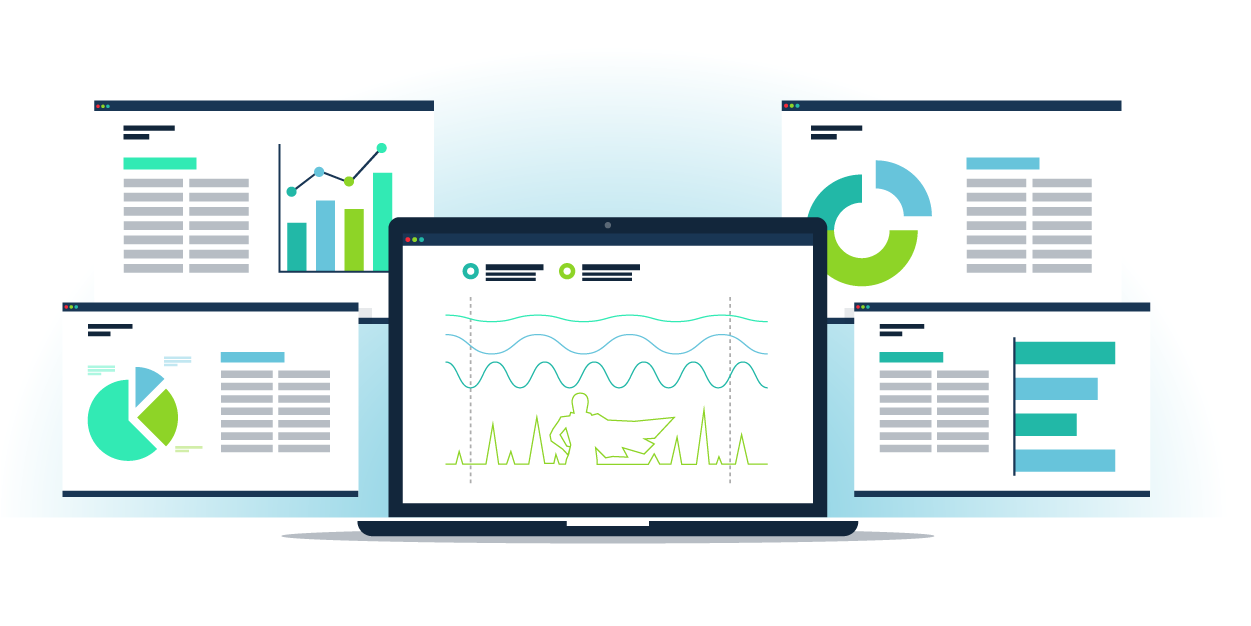
Once you have all your data collected, you need to do something with it.
Your end goal is to develop a hypothetical, fully realised archetype of your learners. As such, the next step is to analyse your data to identify repeating trends and rare traits.
By identifying repetitive data, you can yield a selection of these archetypal personas with similar characteristics, habits, behaviours and needs.
This analysis is typically a time-consuming process. However, together with data collection, it’s the most important part of your process for creating a learner persona.
Luckily, there are various tools and software you can use. For example, text comparison tools can compare data sets to detect similarities. You can even use free word cloud generators to get a visual representation of the most prominent information.
3. Design Your Personas
Now that you have your data and you understand the most prominent characteristics, needs and behaviours, it’s time to create a descriptive profile of your hypothetical learner(s).
This is a collaborative process. As such, you should work with your team to weave together a backstory for your learner persona. Your persona should have a name and the traits of real individuals from your learner audience.
Make sure to add their age group, job title and function, experience level and educational background. Then include at least five character traits for each persona. And remember, these should be an accurate reflection of your learners, even if they are not positive terms.
Once you have described your learners’ characteristics, you should focus on skills. Identify at least three key skills they have and three prominent skills gaps. This will naturally lead you to identify their training goals and typical training challenges.
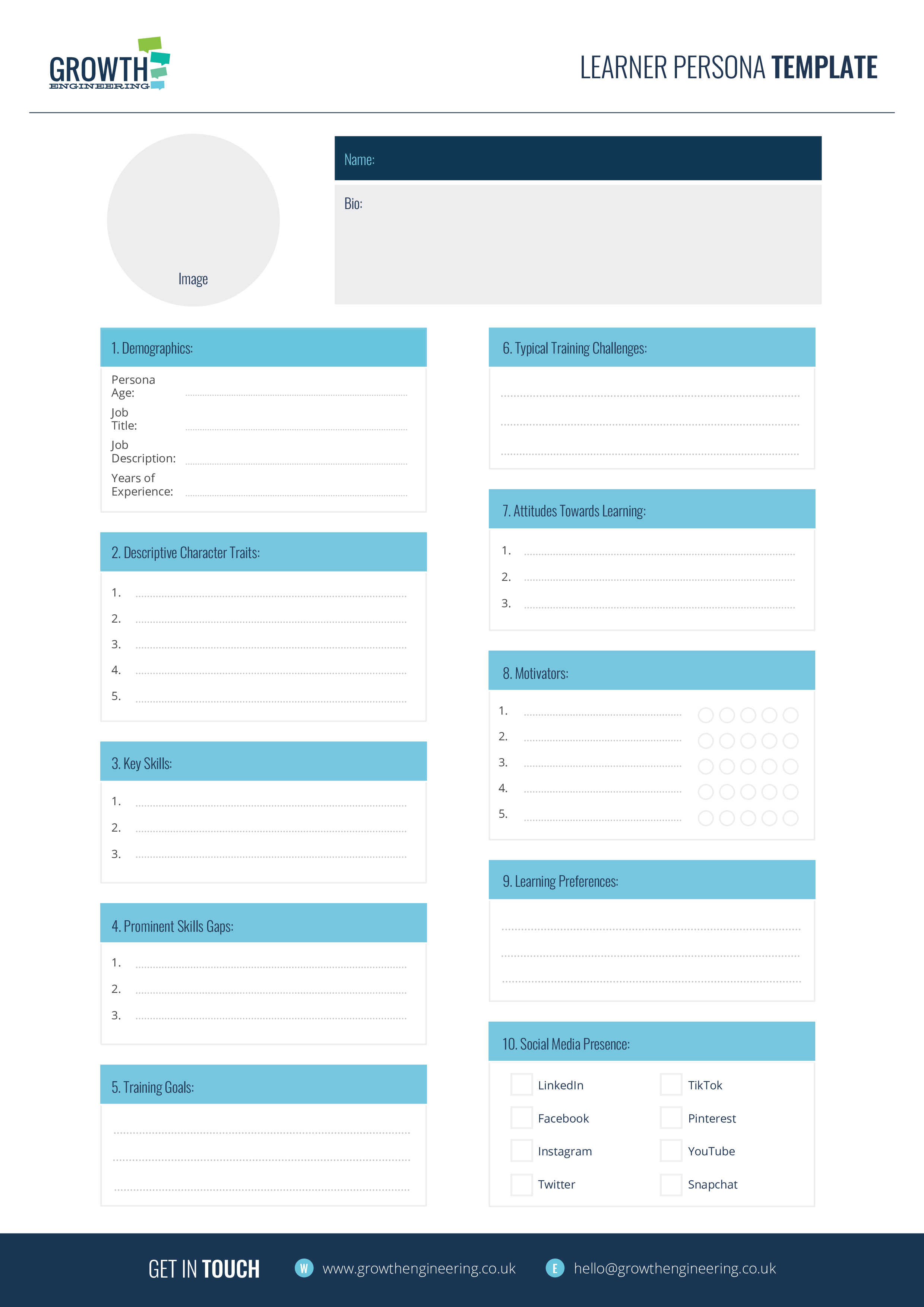 To understand what approaches suit your learners the best, you then need to determine their typical attitudes towards learning. Similarly, identifying their motivators will help you to tap into their extrinsic and intrinsic motivations effectively.
To understand what approaches suit your learners the best, you then need to determine their typical attitudes towards learning. Similarly, identifying their motivators will help you to tap into their extrinsic and intrinsic motivations effectively.
You should also explore their learning preferences and technical abilities. For instance, determine if they prefer online learning or digital training interventions.
Lastly, give your learner persona a look. For instance, determine their haircut and colour, eye colour, build and dress style. You can use easy tools like Avatar Maker to bring your persona to life.
Alternatively, you can use a picture of an actual learner from within your audience, as long as they give you permission to do so. By giving your persona a look, they will feel more real. This, in turn, makes it easier to include them in your thinking processes.
You can use our handy template to craft your learner persona creation.
4. Implement Your Learner Personas
Now you have your carefully crafted personas that are representative of your learners. It’s time to put them to work.
To get started, share the finished personas with your wider team. They need to be front of mind for every person who takes part in designing your learning and development initiatives.
After all, you should apply them to finetune your approaches and strategies. In fact, learner personas should guide your objectives, content strategy, learning pathways, gamification initiatives, social learning strategy and more.
For example, you should set your learning goals in line with the needs, preferences, interests, and career paths your learner personas have. Similarly, their psychometric data will help you to make better course design decisions.
As you create your training, ask questions like these to keep your learners at the centre of your training programme:
- What does the persona already know about this topic?
- Does this content help the persona to meet their goals?
- Does the persona have the right knowledge to understand and complete this training?
- Will the persona find value in the training?
- Will the training content make sense for them as a learner?
- Will the persona understand the jargon used?
Adapting Your Training Programme with Learner Personas
So, now you have your learner personas and are ready to use them to create learner-centric training experiences. But how do you get started? It’s sometimes hard to understand how to put these learner personas to use in practice.
With this in mind, let’s explore how you can use your learner personas to adapt your L&D strategy.
1. Instructional Design
Your personas should guide your instructional design approach, including your training content creation. After all, each learner has their unique preferences when it comes to the type of content they wish to explore. They’ll also have preferences for how that exploration happens.
For example, you need to choose the right balance between pushing and pulling content. ‘Pushing’ means that you direct content to your learners, whereas ‘pulling’ means that learners select which learning experiences they want to engage with.
In addition, your learner personas help you to identify what kind of training content they prefer. Some will benefit from instructional content, whereas others will benefit from demonstrations and case studies.
Your learner personas’ training challenges, goals, skills gaps and attitudes towards learning will inform their content preferences. For example, learner personas who prefer short-form content will guide you to create microlearning units and TikTok-style video clips.
Similarly, if your persona prefers to learn on the go, you know your learners would benefit from an easily-accessible mobile learning strategy.
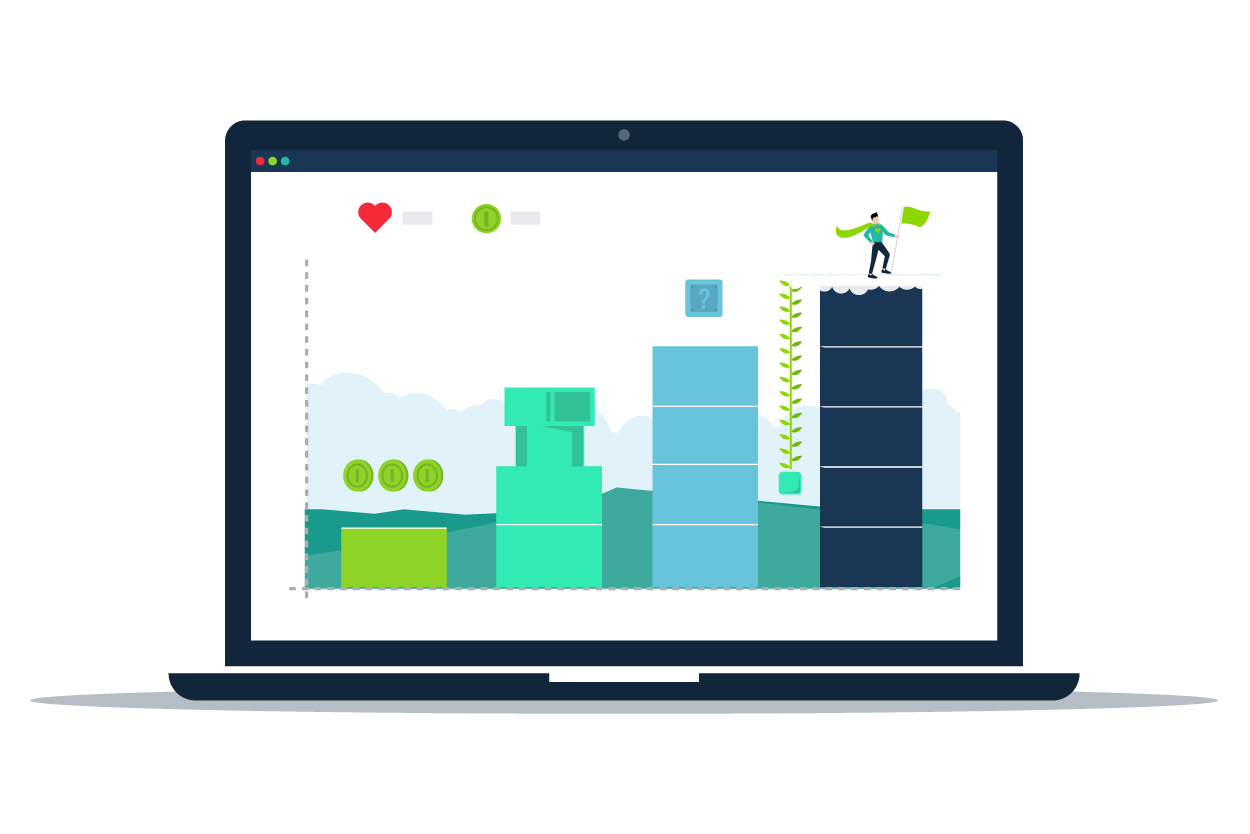
2. Gamification
Gamification means applying gaming mechanics to non-gaming environments to make difficult tasks more palatable and fun. Here at Growth Engineering, we are experts when it comes to using gamification to incentivise learners into action.
Each of your learner personas will react differently to gamification. After all, your personas’ motivation and engagement levels help you to identify whether gamification will be effective in driving learning activity.
For example, if your persona is financially motivated, you can enable learners to trade their virtual rewards, like Experience Points, for real-world rewards. On the other hand, if your persona is motivated by recognition and respect, then a Leaderboard is a perfect addition to your training programme.
3. Social Learning
Similarly to gamification, your learner personas’ characteristics, motivation levels and learning preferences help you to determine what kind of social learning strategy will work best.
If your persona is described as a socialite, extrovert, people person or something similar, you can already see that they will benefit from social learning. After all, they prefer to be socially present, and this typically extends to learning.
As such, you should introduce social learning features, like Clubs and Social Feeds, where learners can build relationships and share knowledge. You can also tie social activity with gamification elements, like Badges and XP, where individual action contributes towards the goals of a wider team.
We also recommend you identify your learners’ social media preferences and activity levels in your data-gathering process. After all, if your learner persona is highly active on social media, they are more likely to find value in social learning.
4. Epic Meaning
Epic Meaning is that sense of purpose that fuels our passion for a cause. As such, it considers your learners’ motivation to take action. Oftentimes, this is driven by the belief that they are engaged in something bigger than themselves.
The value learners find from their training programme varies per individual. Typically, it comes down to communicating the benefits of the training programme.
The best way to highlight these benefits is to answer the WIIFM (‘What’s in it for me’) question. However, you need to consider your personas’ characteristics, motivators, training goals and challenges to make your benefit statement effective.
For instance, if your persona struggles to find time for training, you should highlight how quick and easy it is for them to build their knowledge with your easily-accessible microlearning units.
If your learner personas crave acknowledgement and recognition, you should highlight how your training helps them to achieve this. Or perhaps your persona is motivated by financial gains. In this case, highlight the potential rewards or performance improvements they can achieve with their training.
Learner Personas Best Practice
As we know by now, creating effective learner personas takes careful planning and a lot of effort.
The following bullet points condense our learner persona advice into easy-to-understand tips. As a result, you will end up with personas that are detailed and accurate enough to make a real difference.
Getting Started
- When you are creating your first personas, find a template to follow. You can then create your own approach in the future once you know what works for you.
- Avoid relying on stereotypes about your learners and data.
- Focus on the most important information and avoid collecting irrelevant data. This will only make your data analysis process longer.
Designing Learner Personas
- The ideal number of learner personas is between 2 and 5, depending on the size of your organisation or learner audience.
- However, ultimately, your data should guide how many personas you need. In fact, the common characteristics you yield from your data should determine the number of your personas.
- Make sure your personas cover a wide range of ages, seniority levels and backgrounds. Each persona should be notably different.
- If your personas overlap significantly, you might not need the number of personas you have created.
- You might find it useful to yield a primary learner persona and then have additional secondary personas. Your primary persona should encompass the most prominent trends in your data.
- While we recommend including names, genders and illustrations, you may choose to leave them out if you think they will create unconscious bias.
- Your backstory or persona biography doesn’t need to be long, but it gives you a chance to dive deeper into your learners’ psychographic information.
- However, avoid excessive personal details. Instead, focus on behavioural patterns, goals, environment and attitudes and sprinkle in a few personality details to bring your personas to life.
- In fact, keep your personas relatively simple. Don’t make them overly complex by including too much information.
- Instead, focus on creating personas that are easy to understand and remember.
- As a rule of thumb, a well-developed persona will typically be one or two pages long. If your description is just a few paragraphs, you know you need to go into more detail.
Implementing Learner Personas
- Before you start applying your personas, validate them with your stakeholders to ensure they accurately reflect your audience.
- Don’t just create personas at the beginning of your learning programme and then forget about them. Continuously refer back to them throughout the instructional design process.
- Have conversations about your learner personas to make them a part of your thinking processes.
- Referring to them as if they were real people helps with this. For example: “Does Jane have the skills to use this learning platform without training?”.
- Build empathy for your persona. Put yourself in their shoes and try to understand what they think and how they feel.
- Use your personas to inform your internal marketing and communications about your training programme. This helps you to tailor your messaging and outreach strategies to engage your audience.
- Lastly, review and update your personas regularly to ensure they remain accurate and relevant. After all, they are not set in stone.
Final Words
Phew, there we have it! Learner personas are a valuable tool for understanding your audience and creating effective educational experiences.
By creating personas, you can better understand your learners’ needs, motivations, and learning preferences. This information can be used to tailor course content, instructional strategies, and even your marketing efforts to engage your learner audience.
This begs the question: how well do you know your audience?
Would you like more help when it comes to creating your personas?
Then our tip sheet is the perfect resource for you. Get your free resource today!


